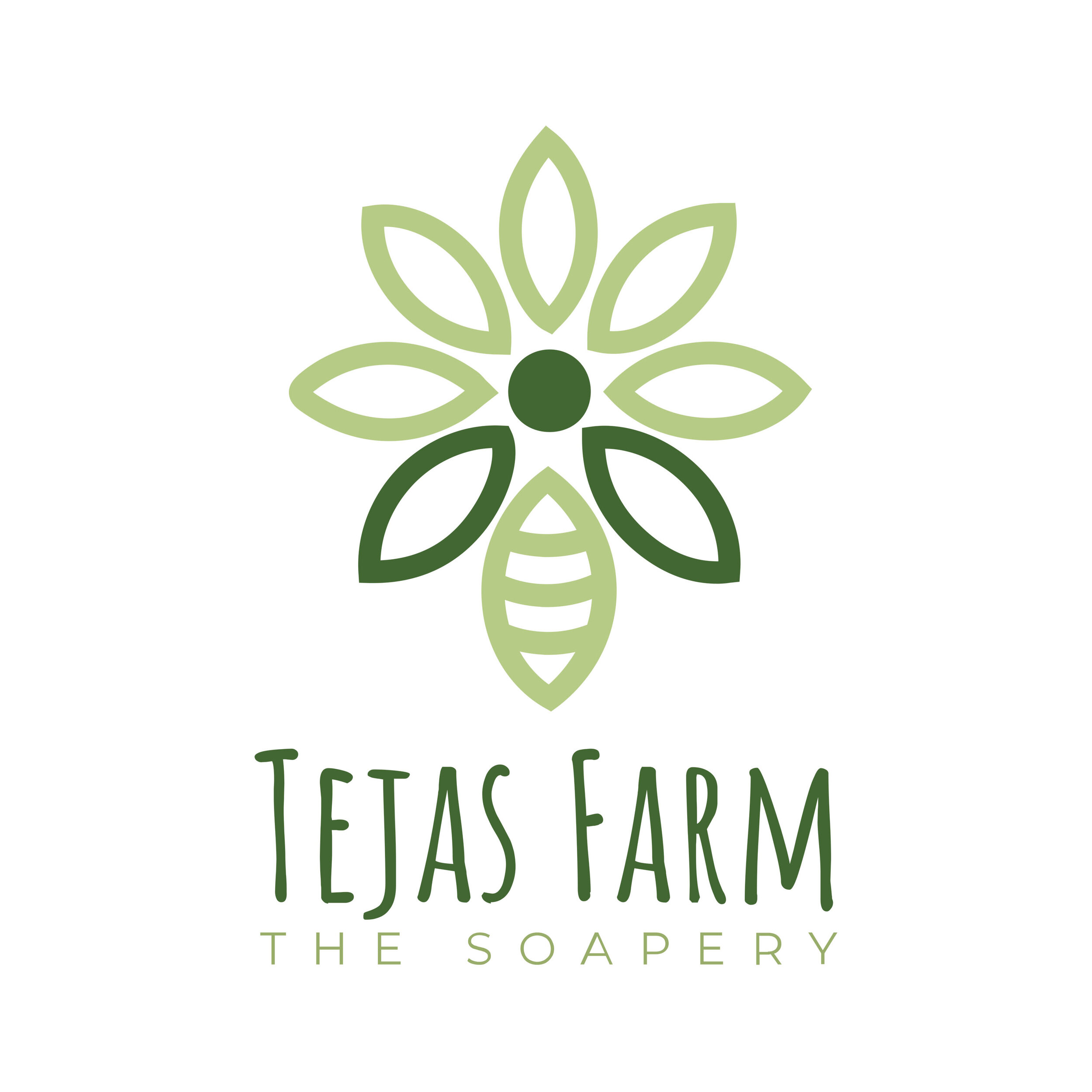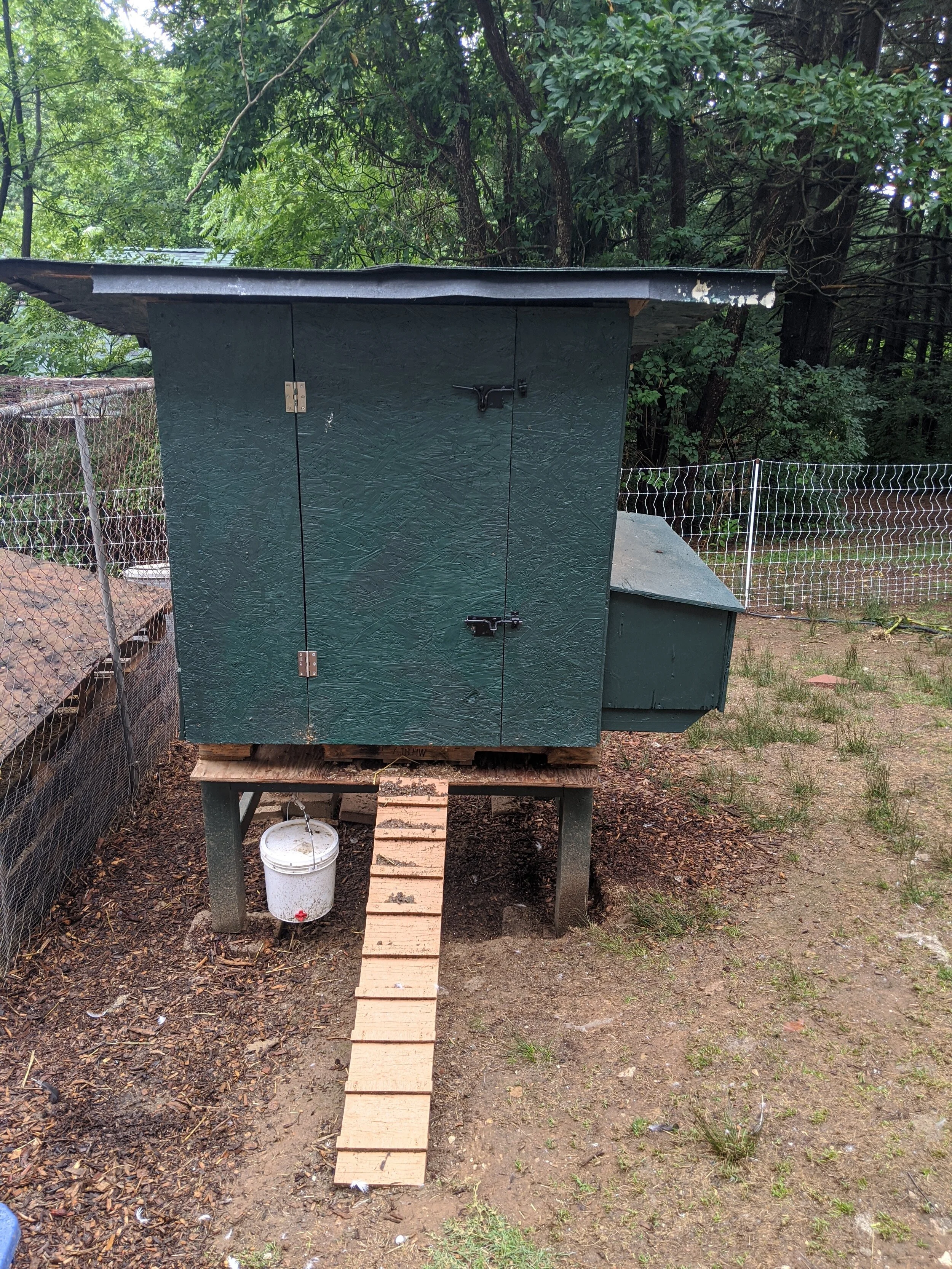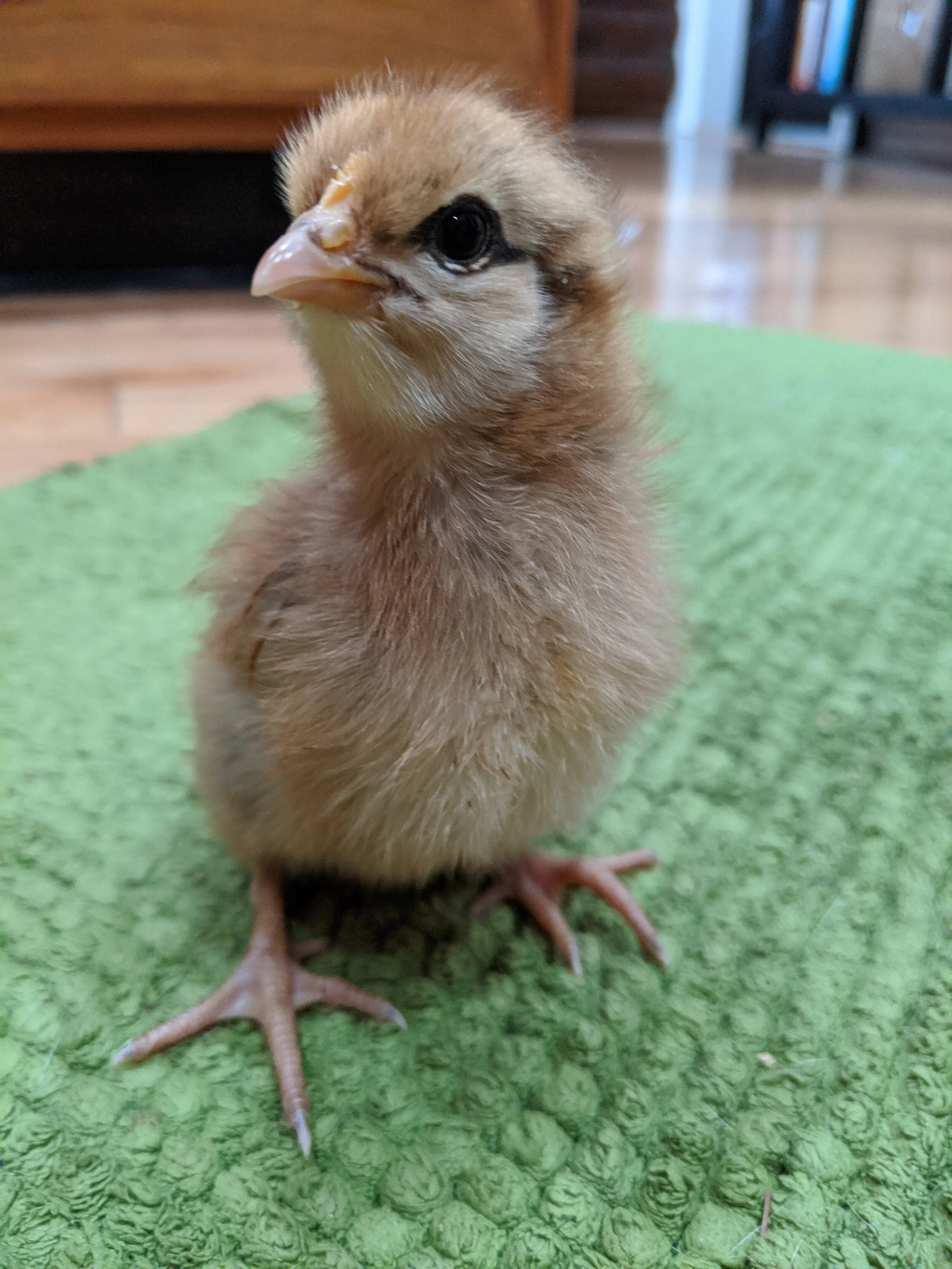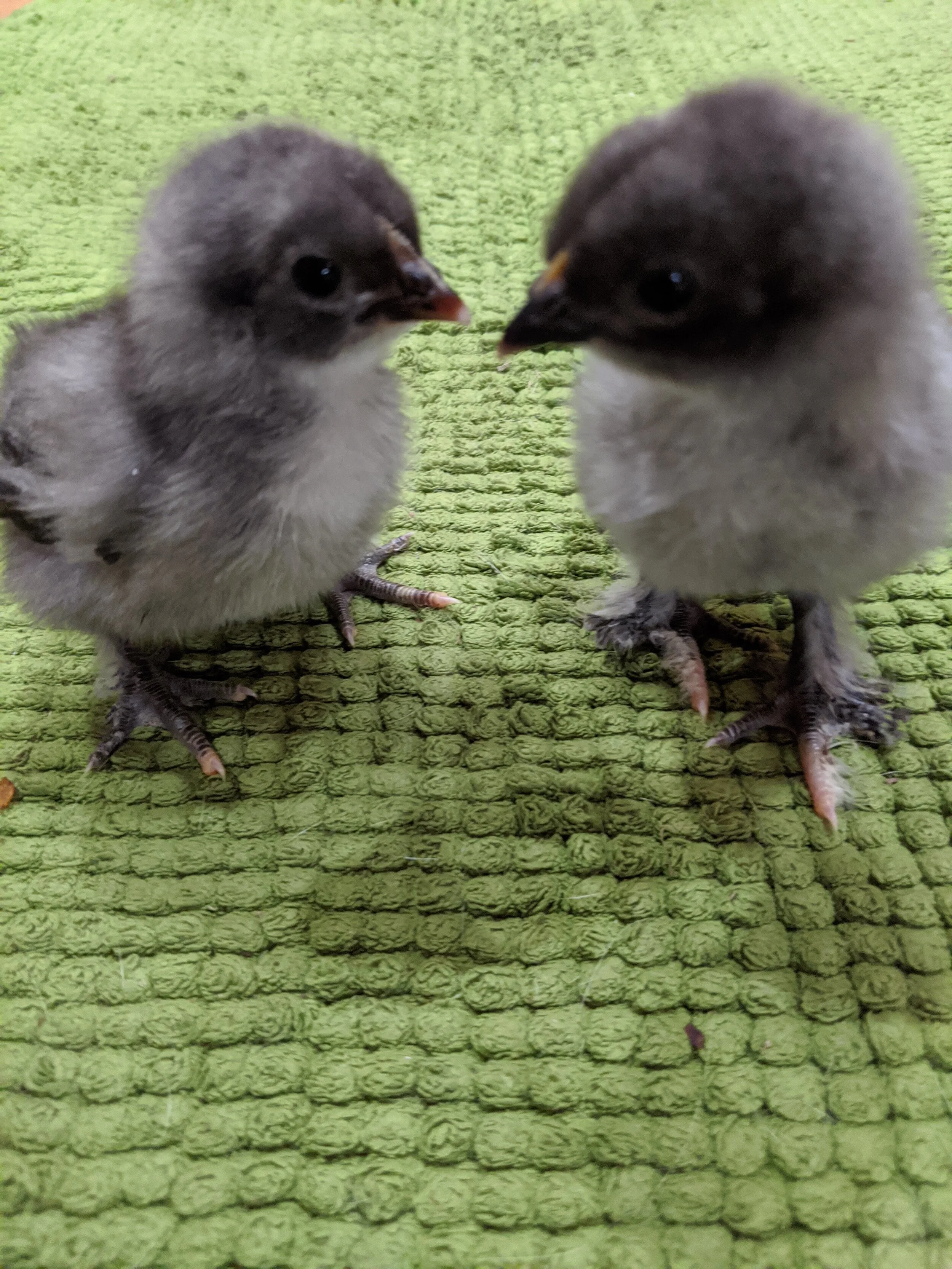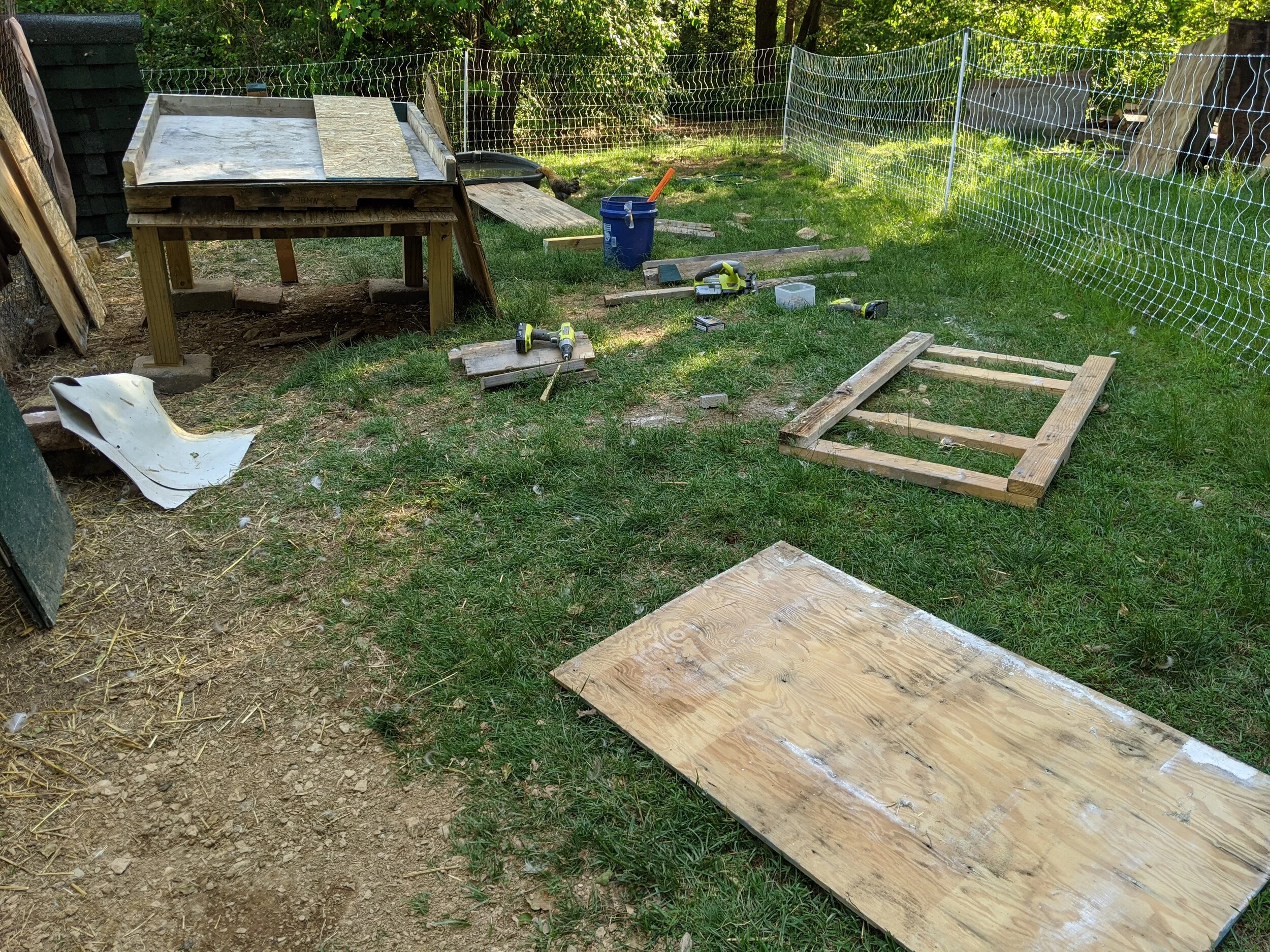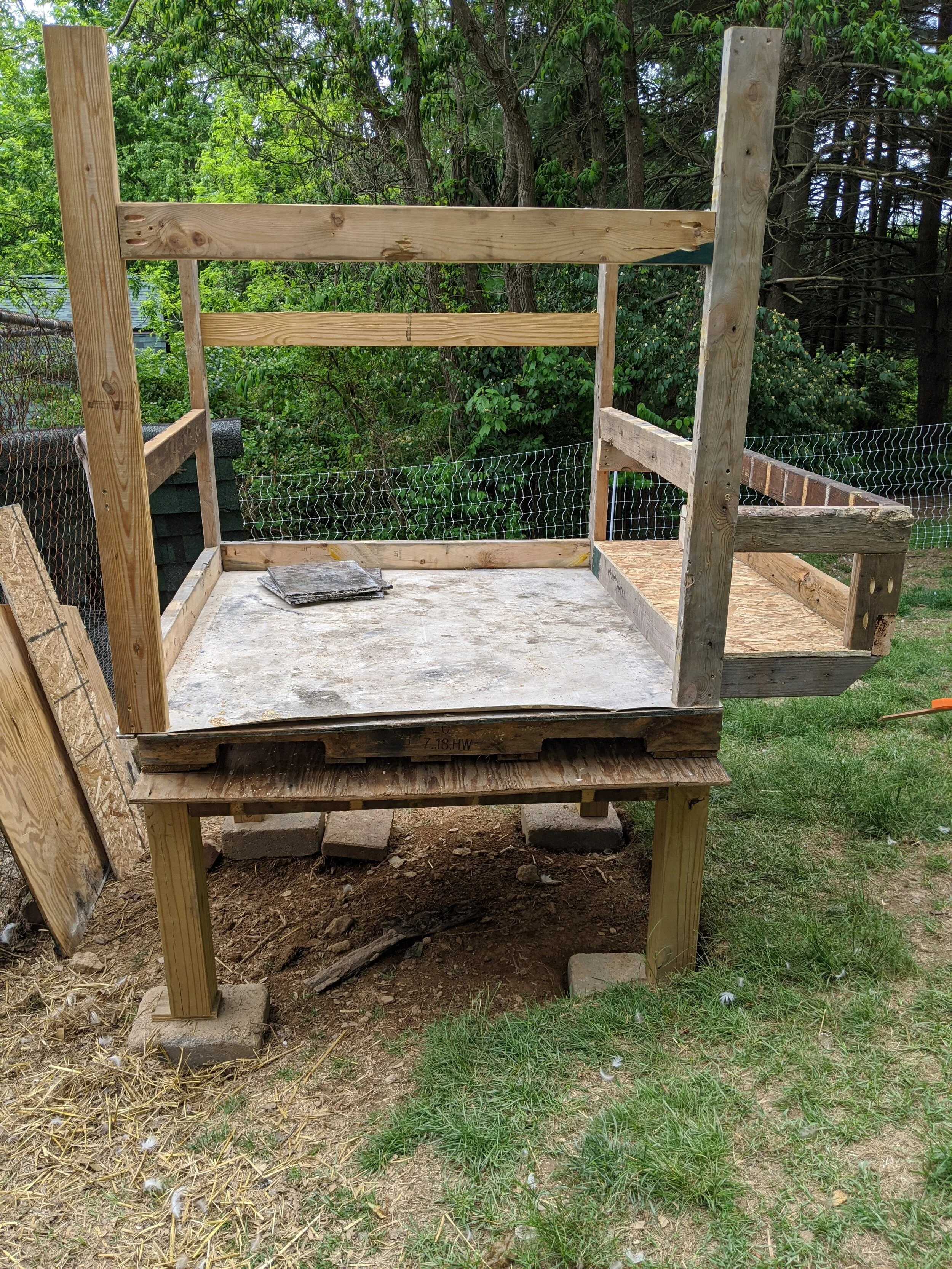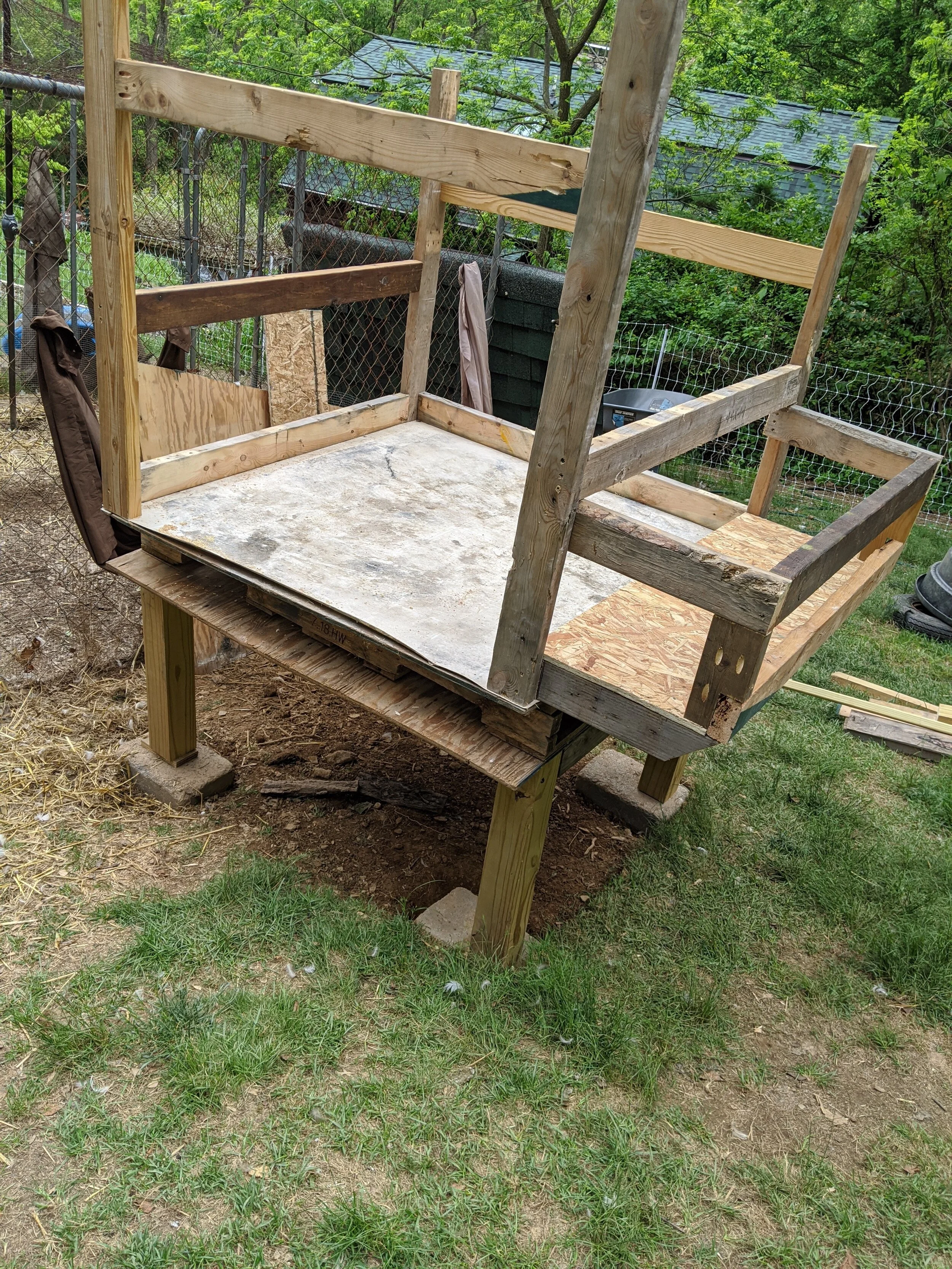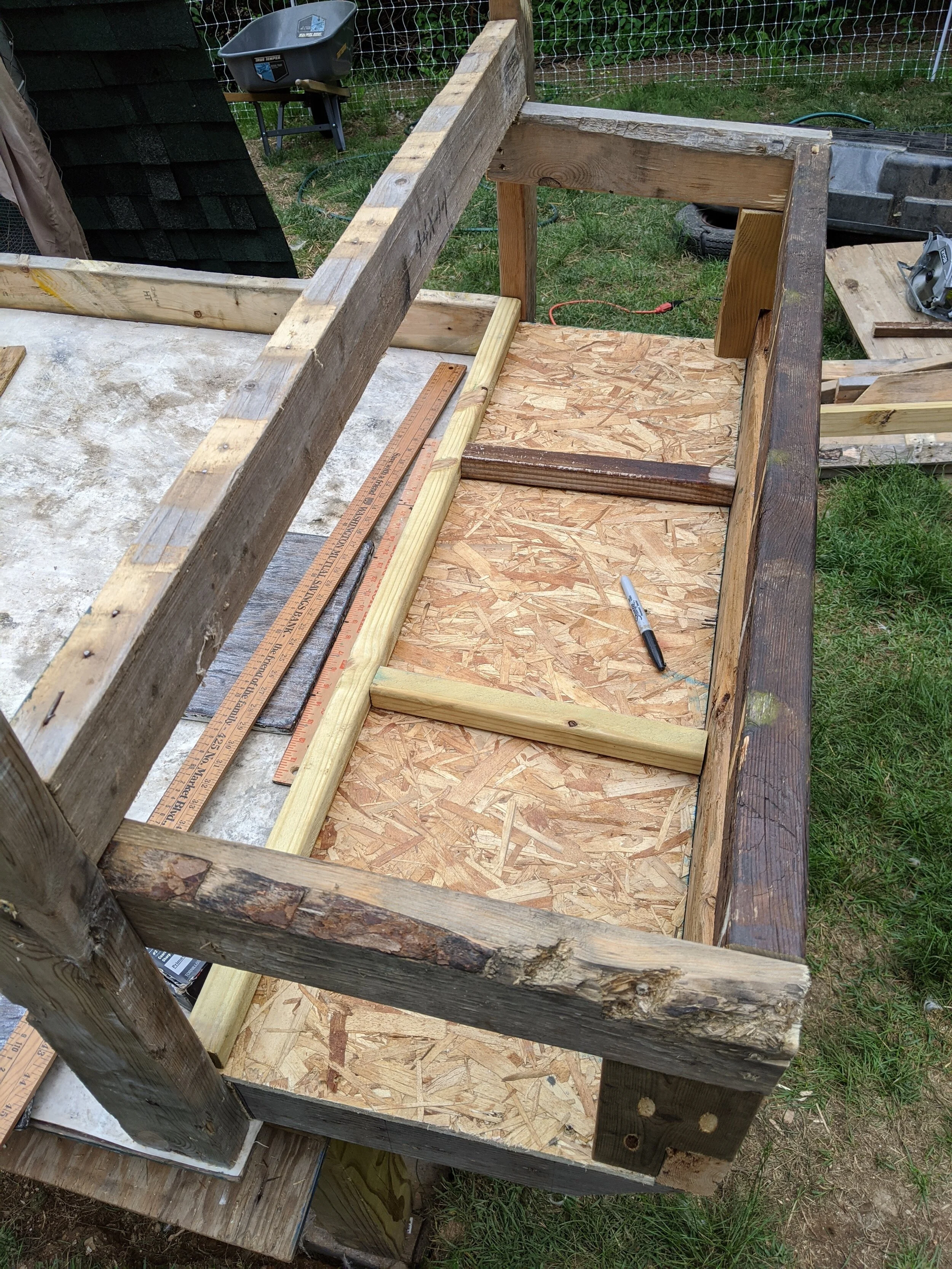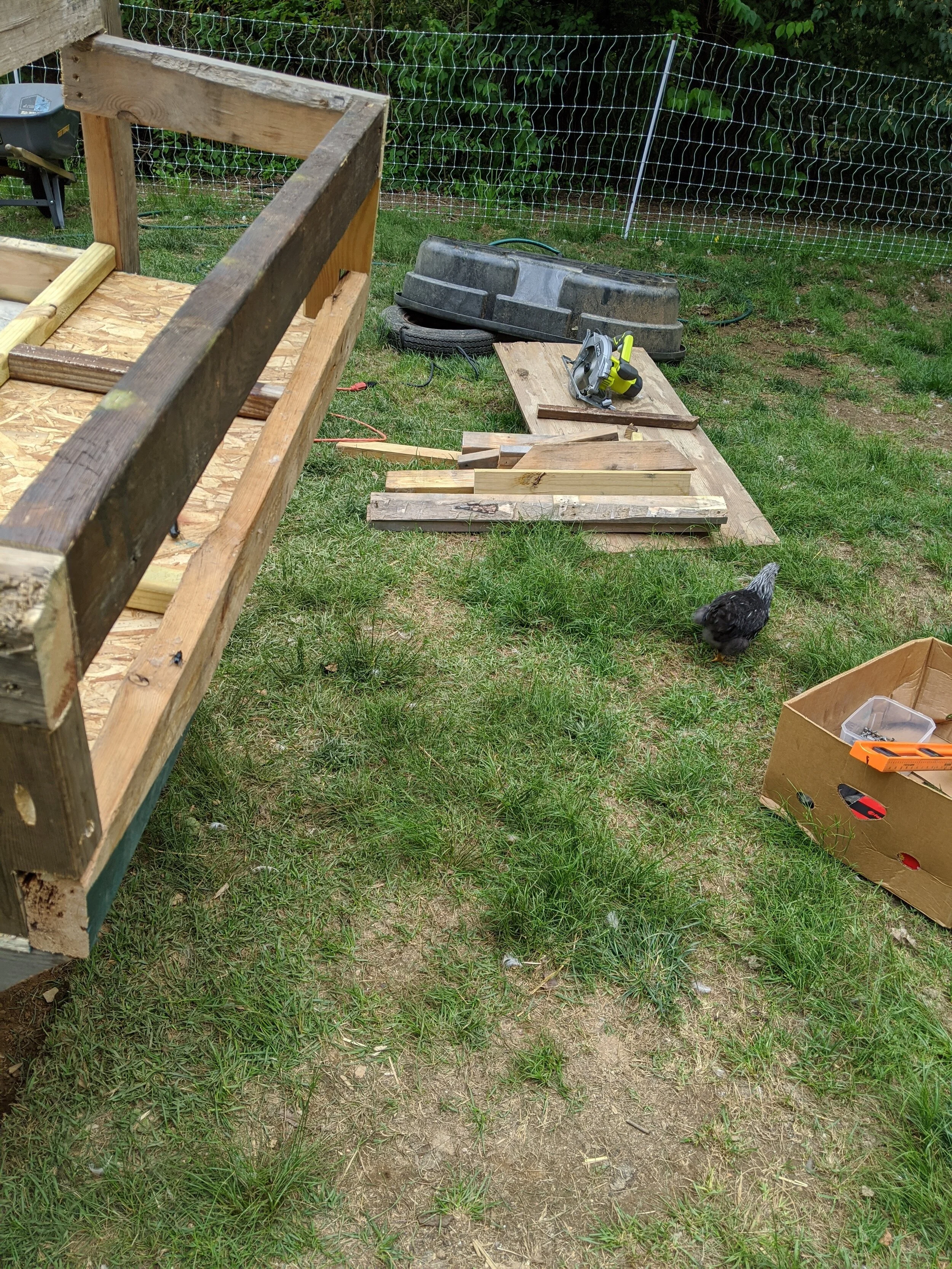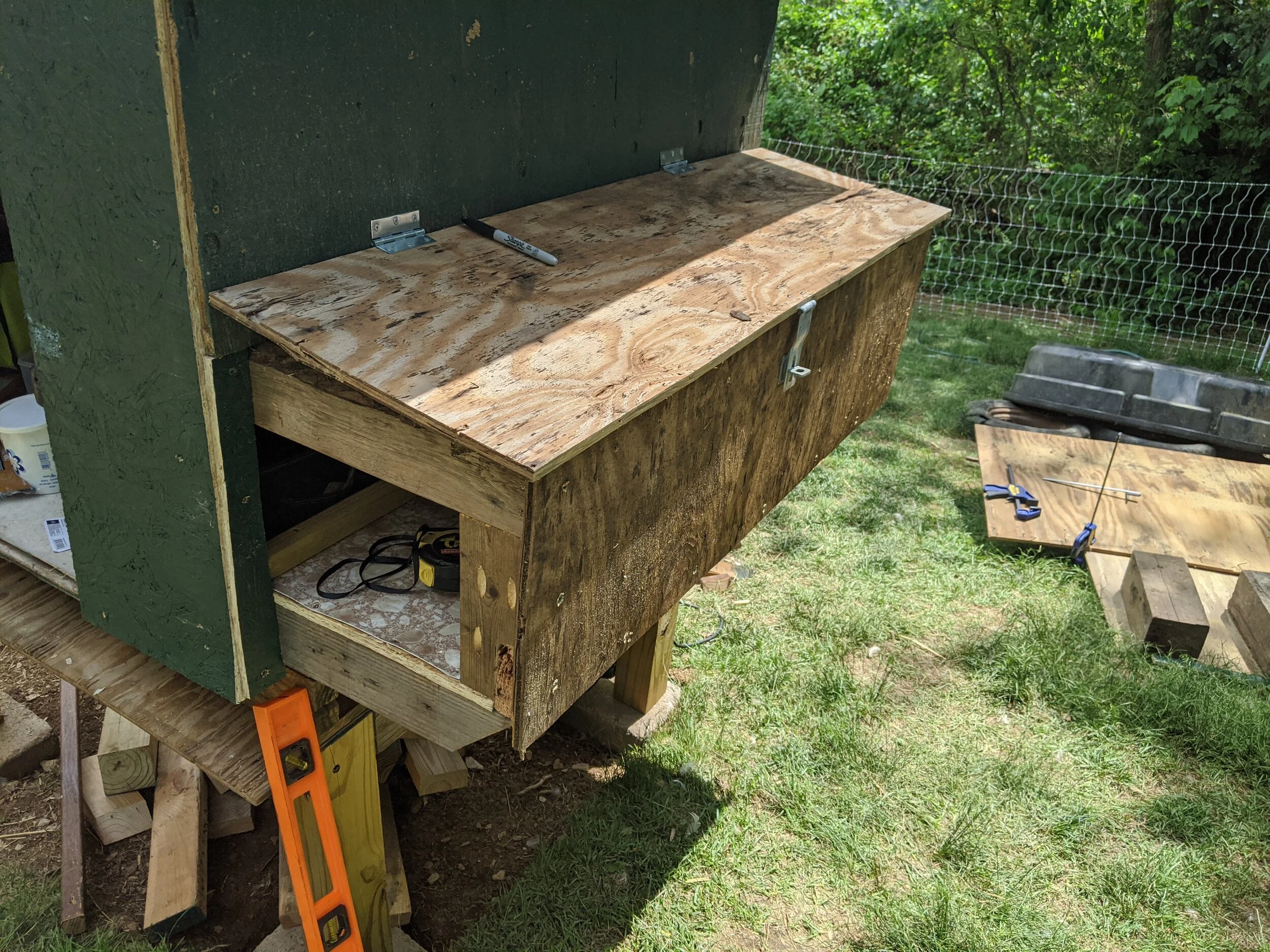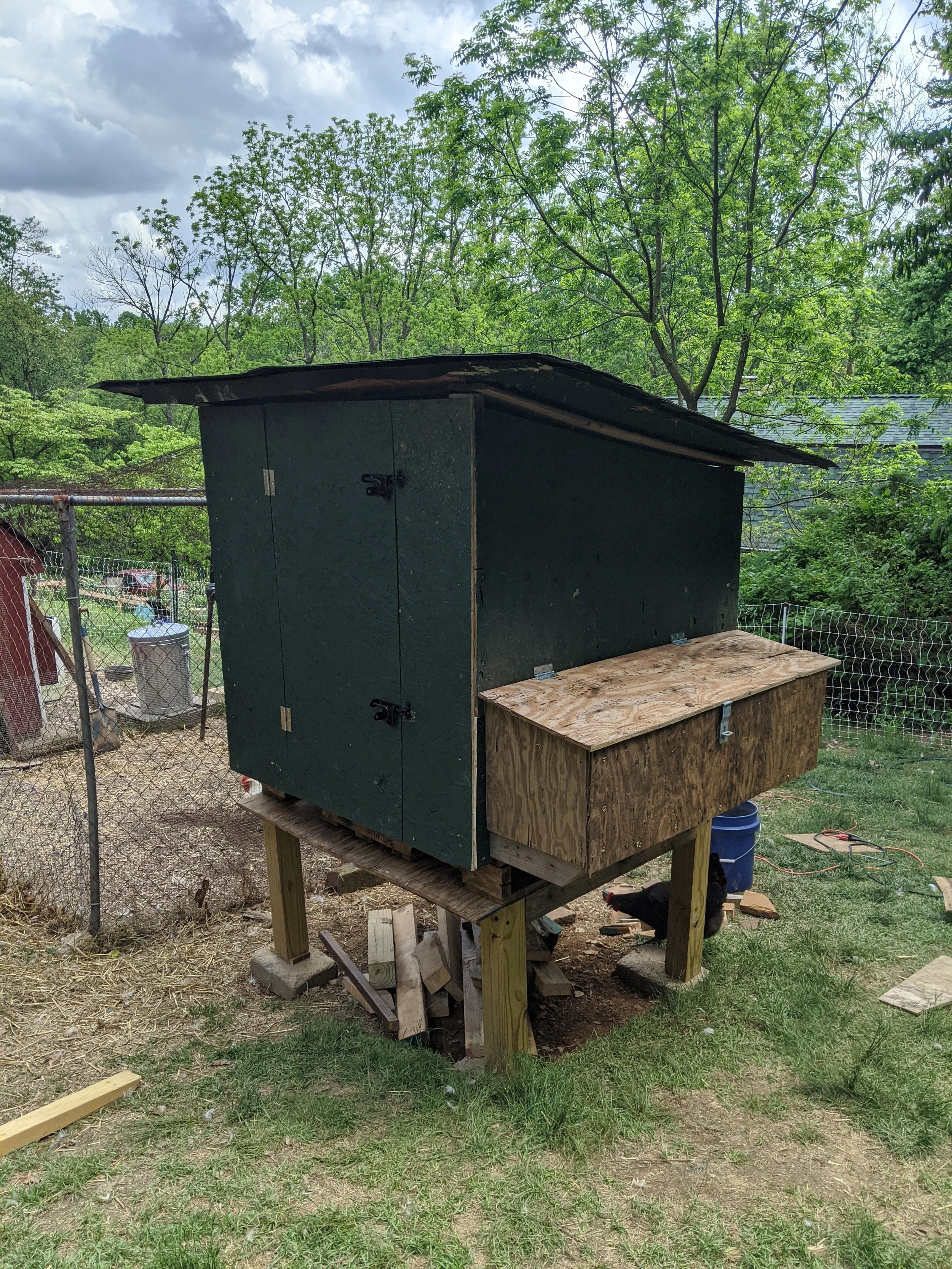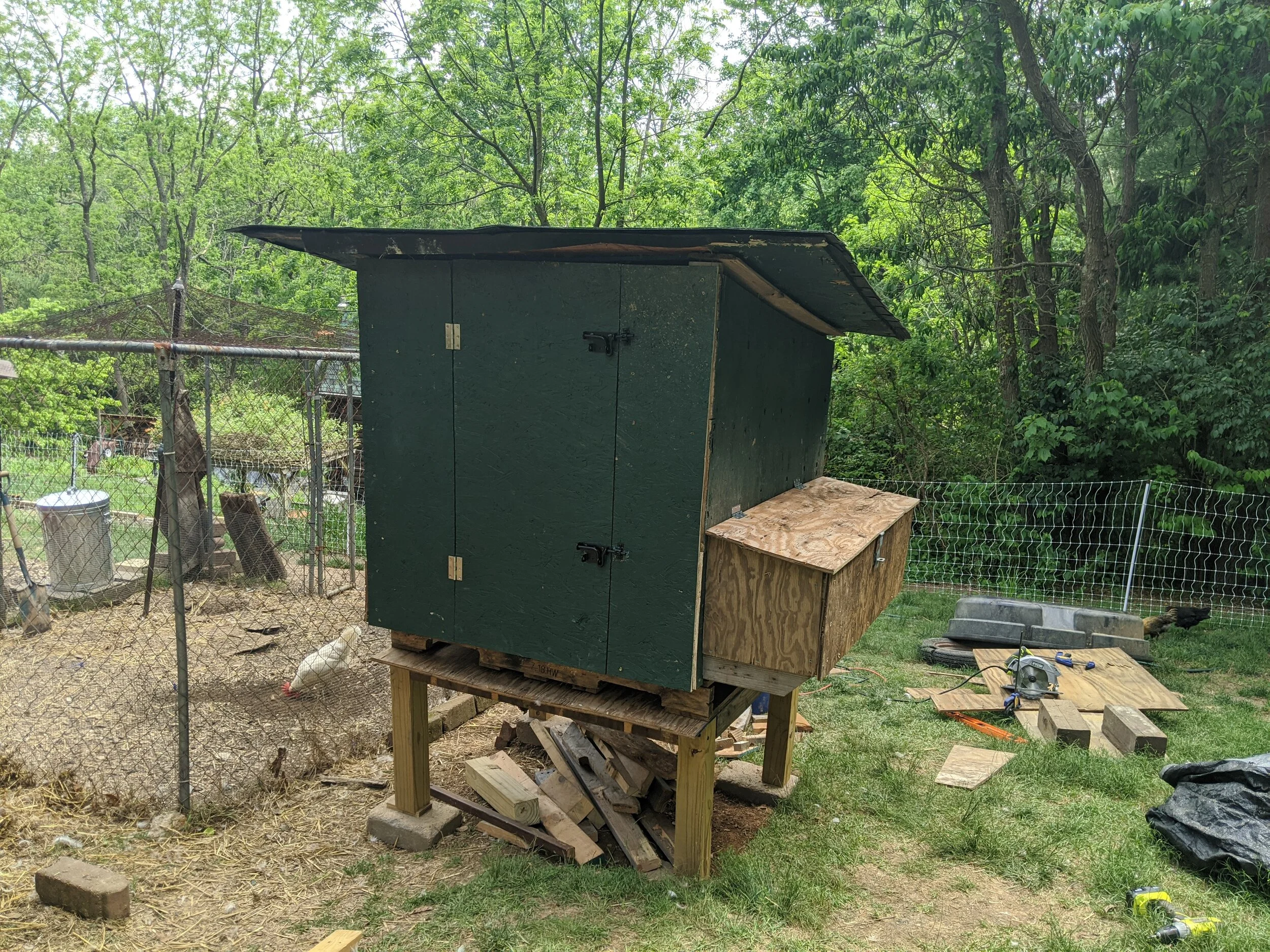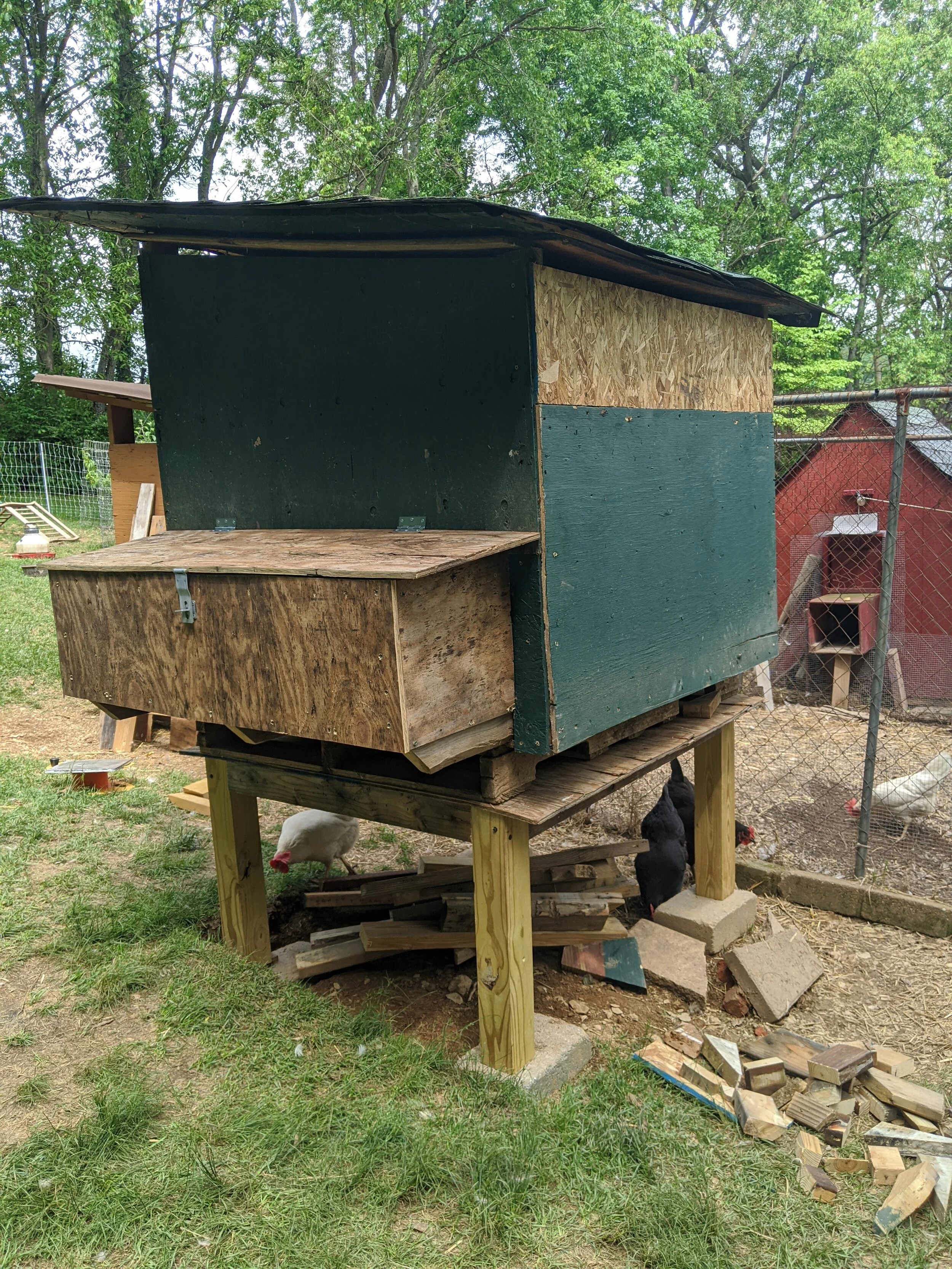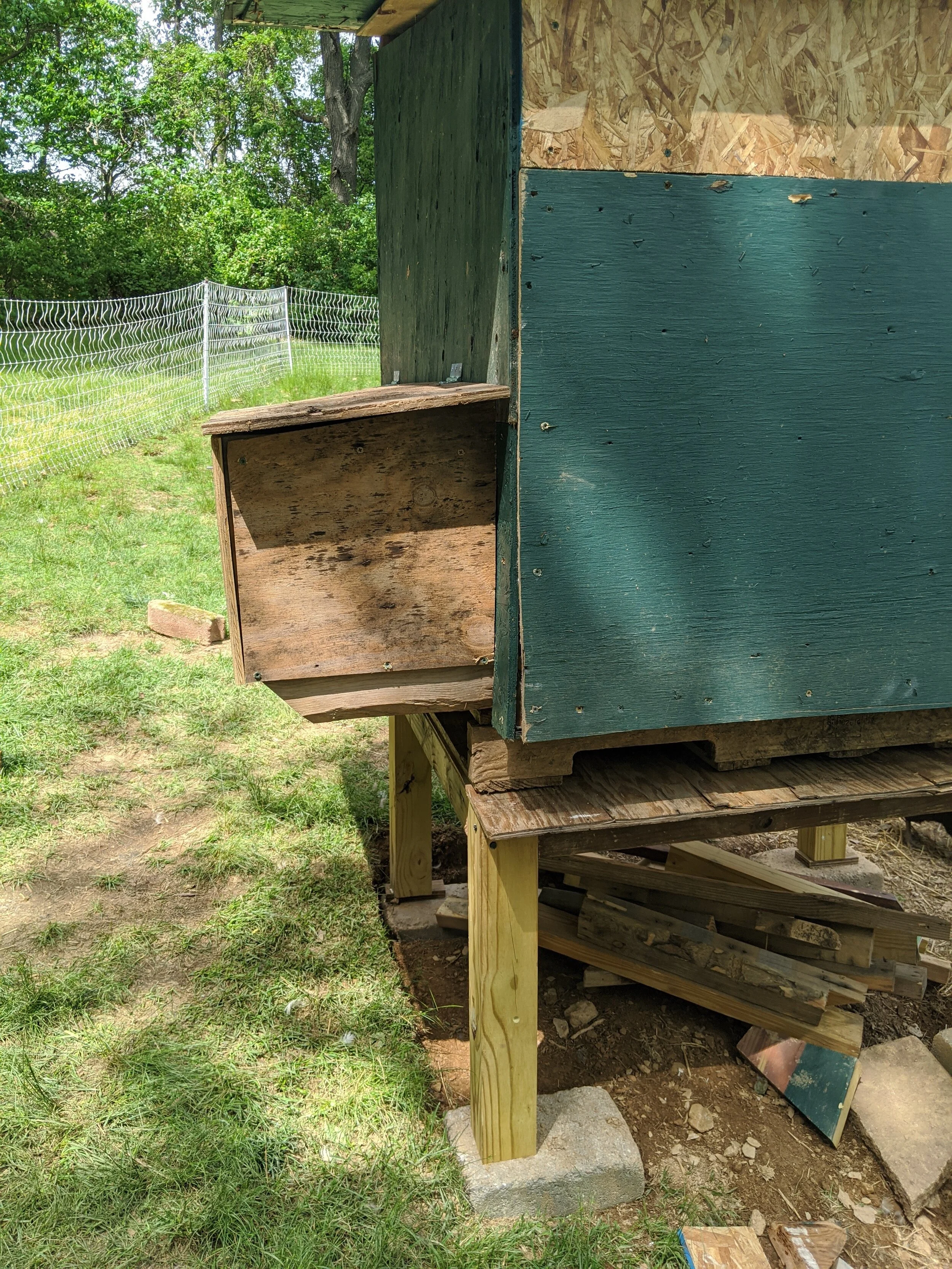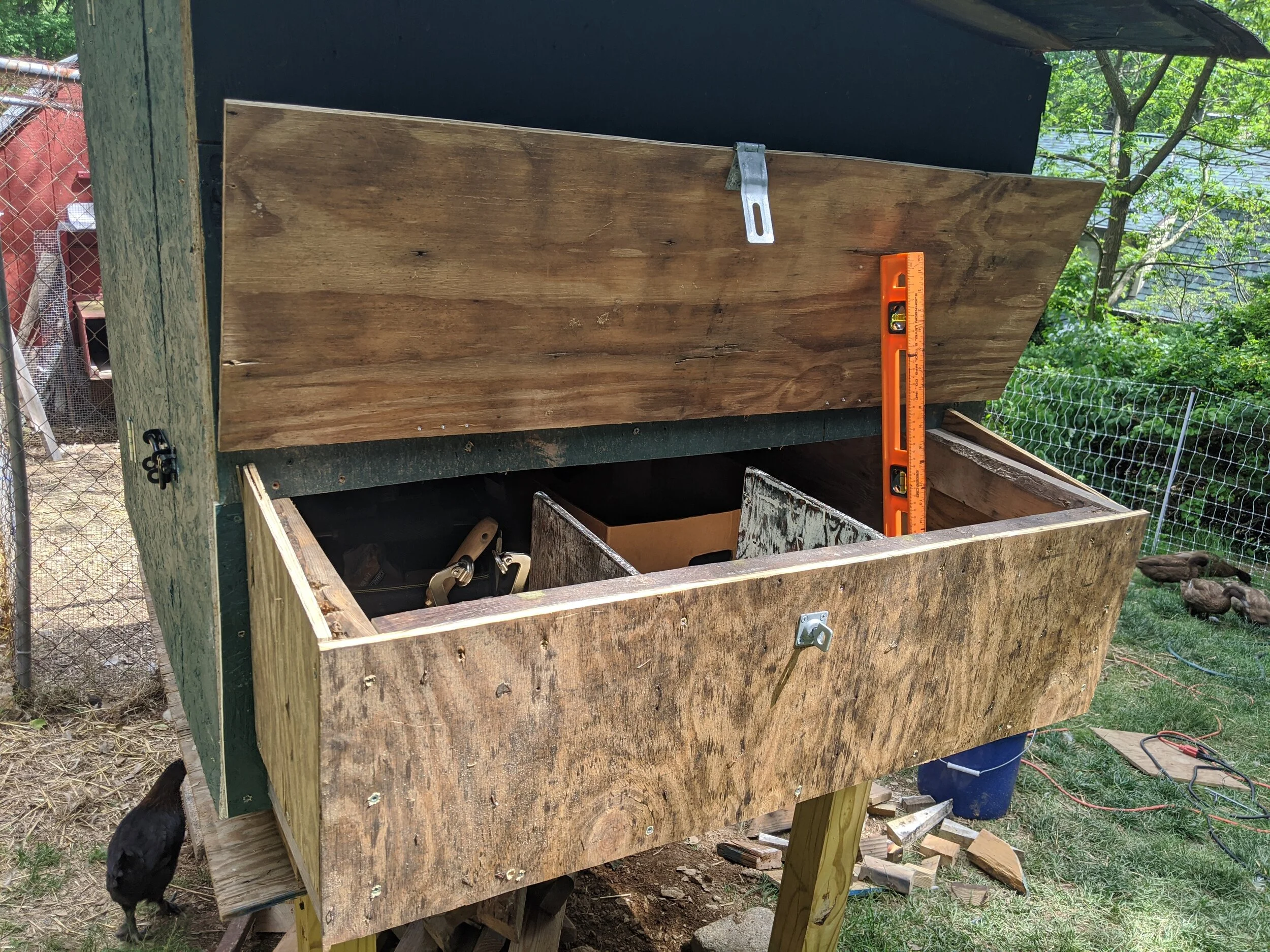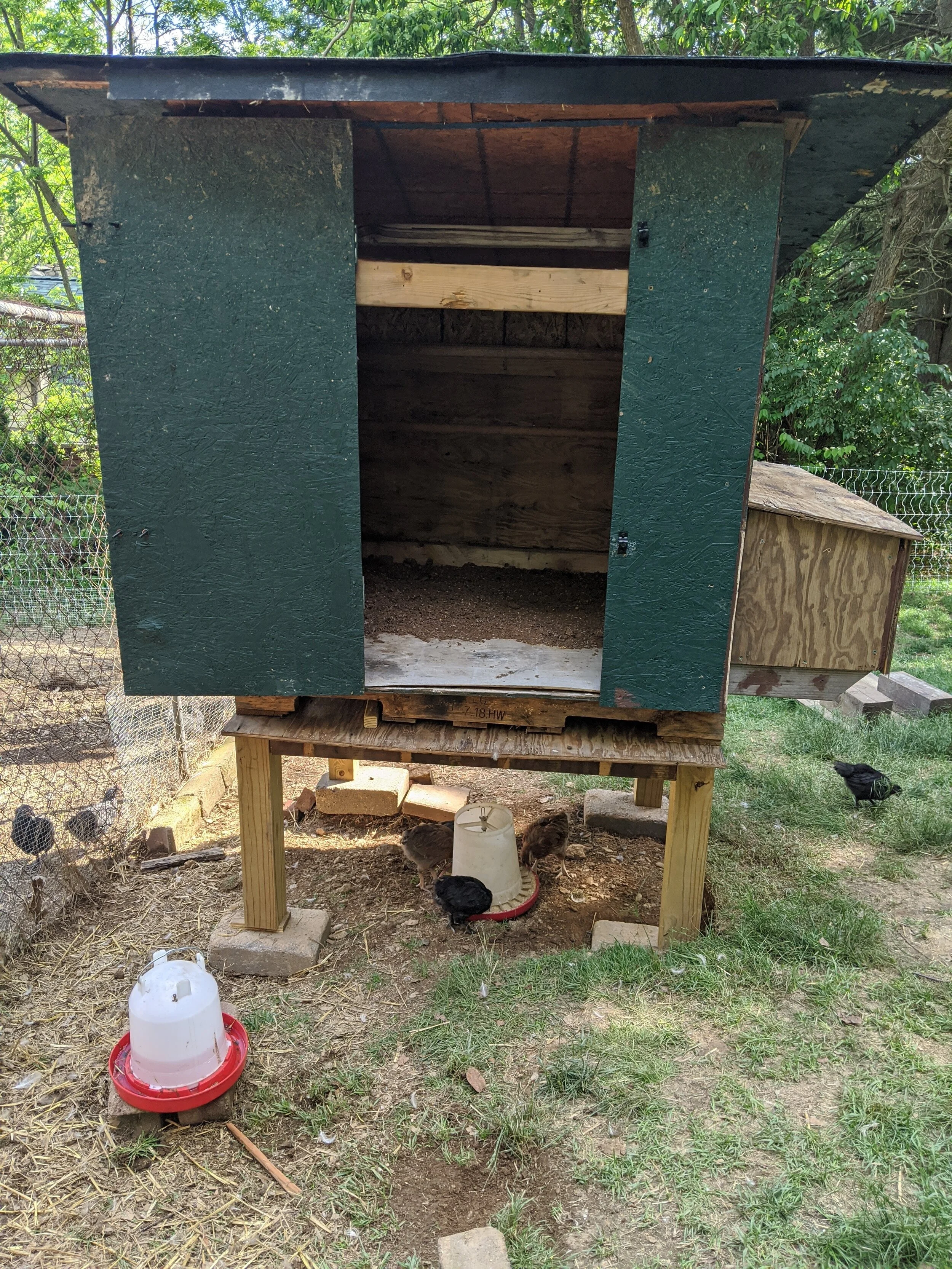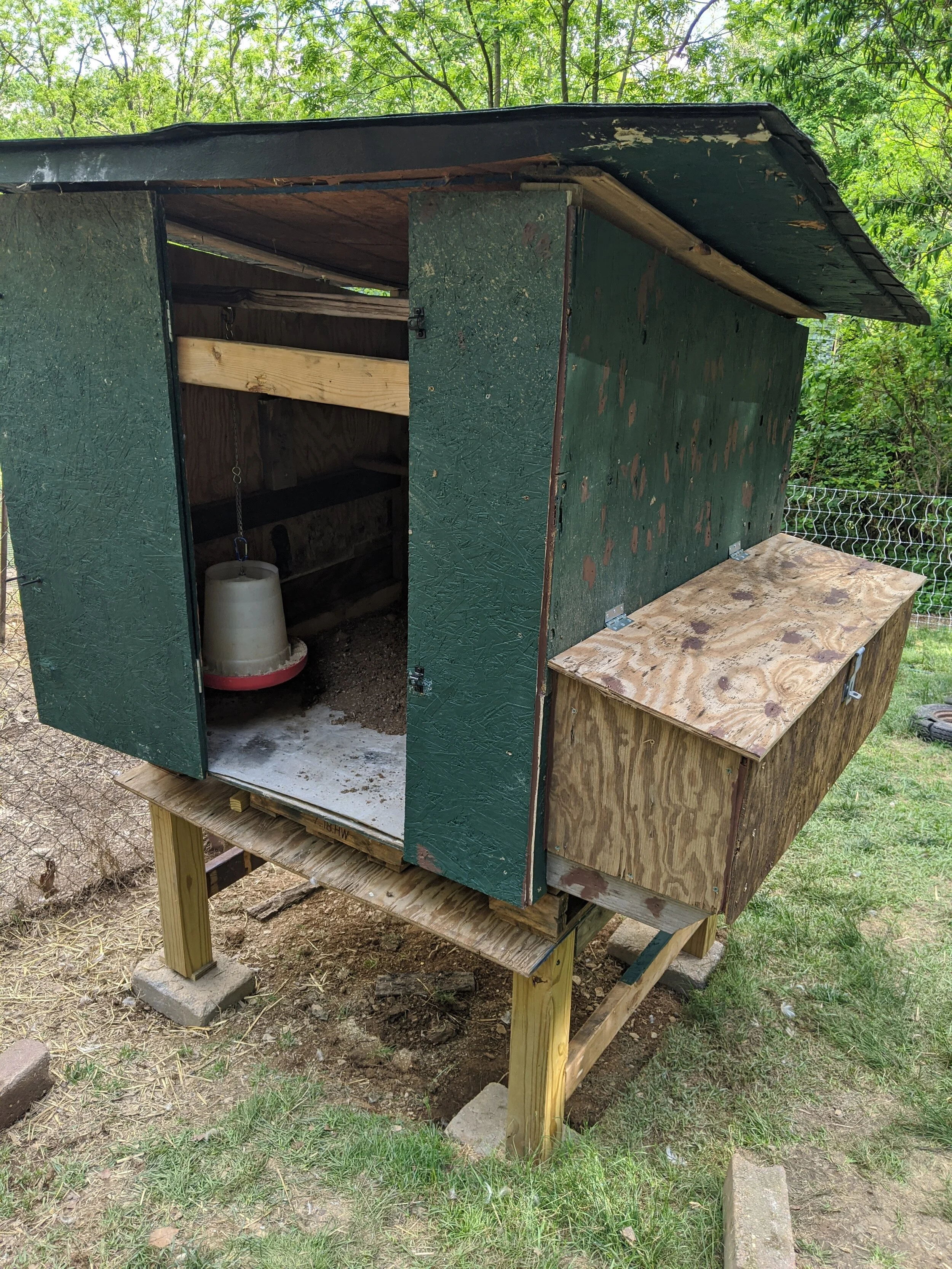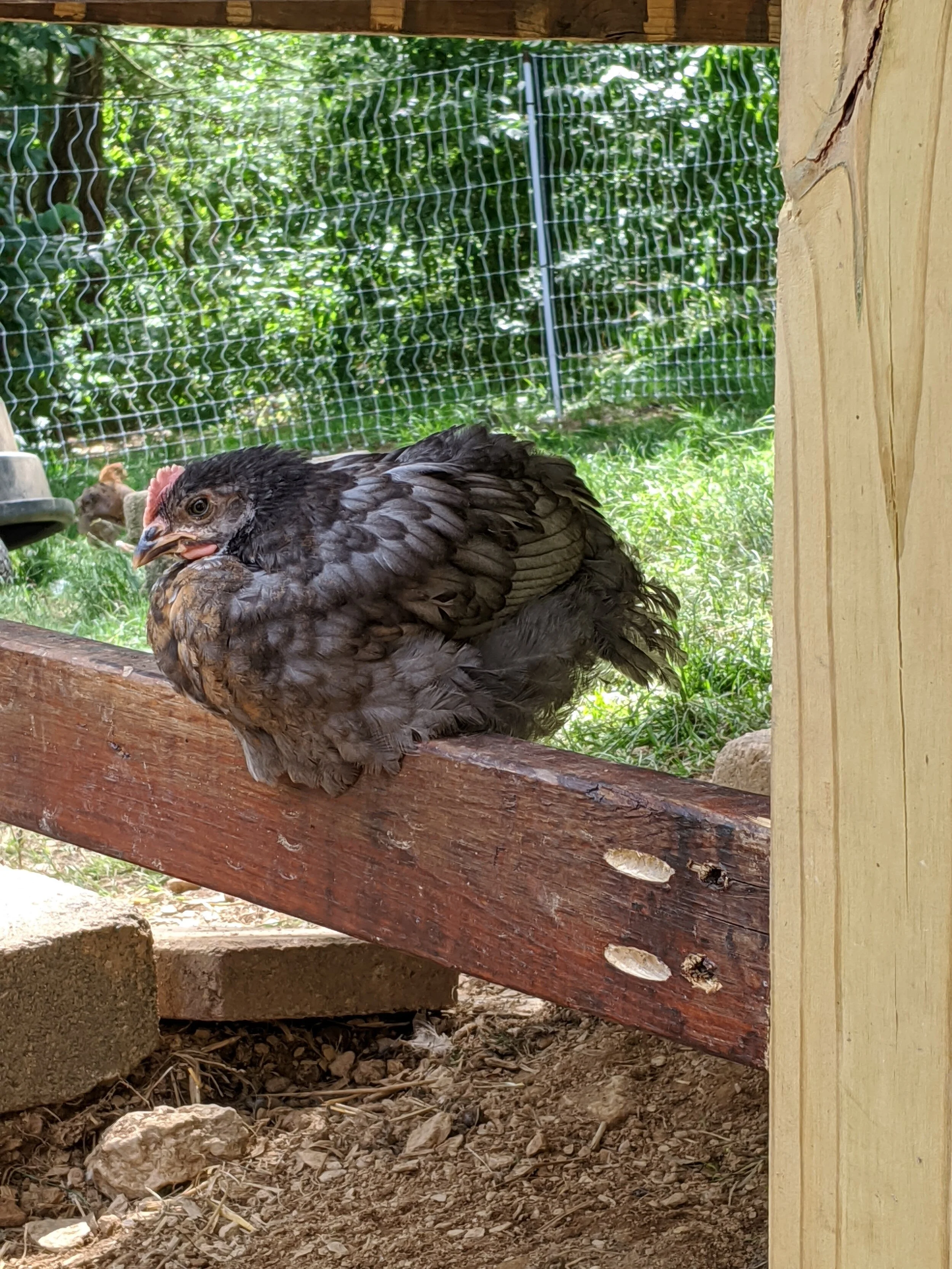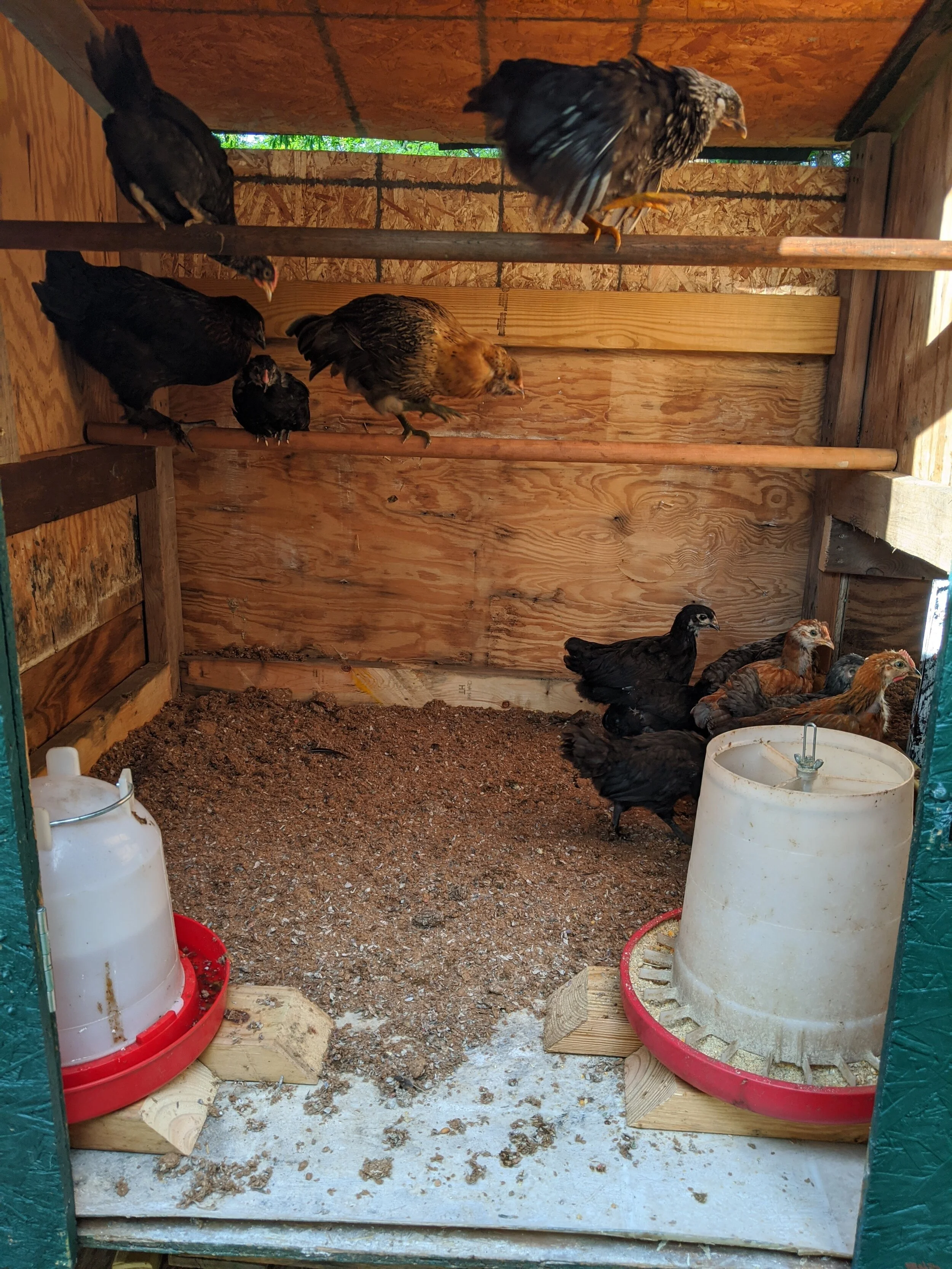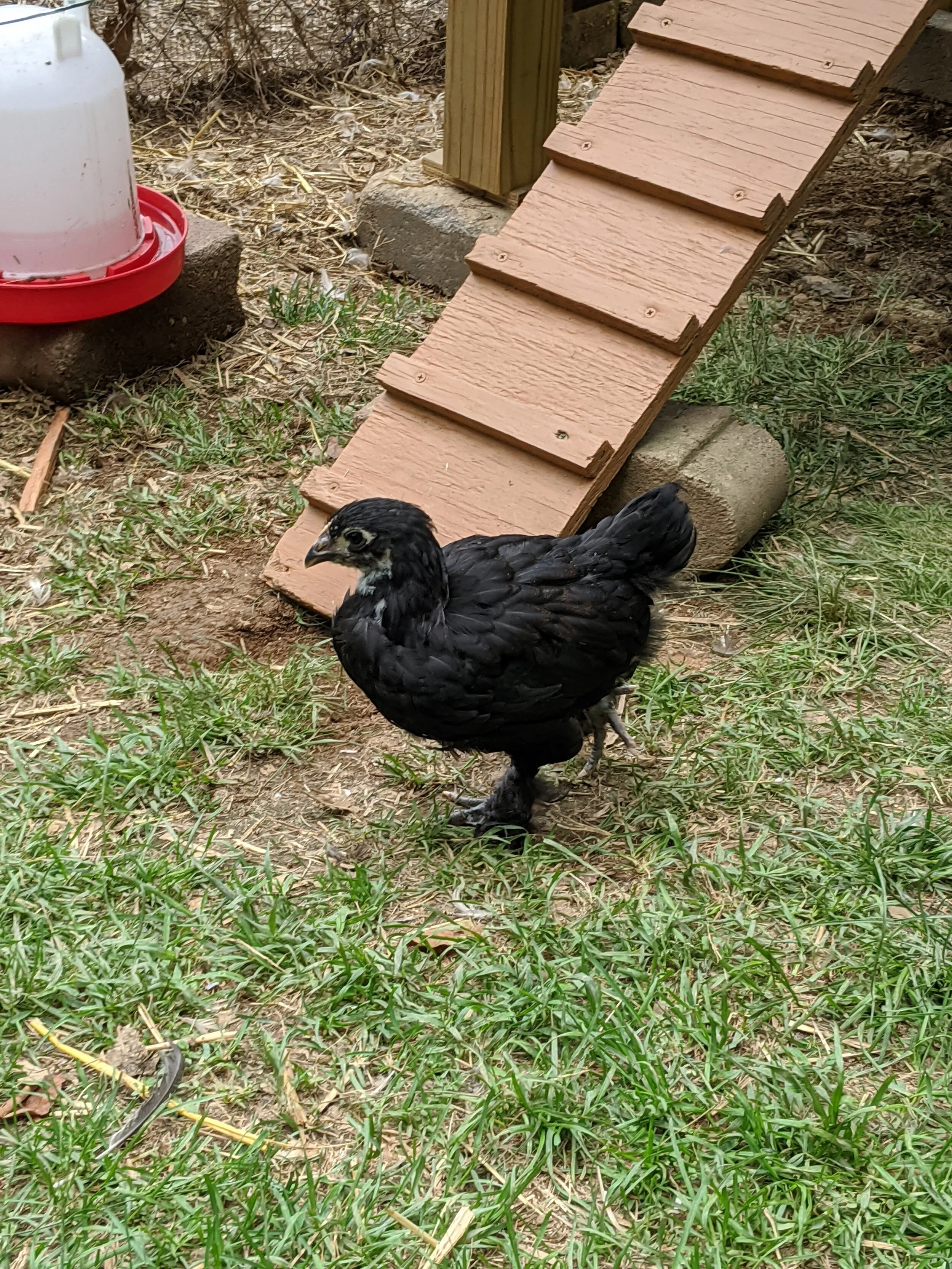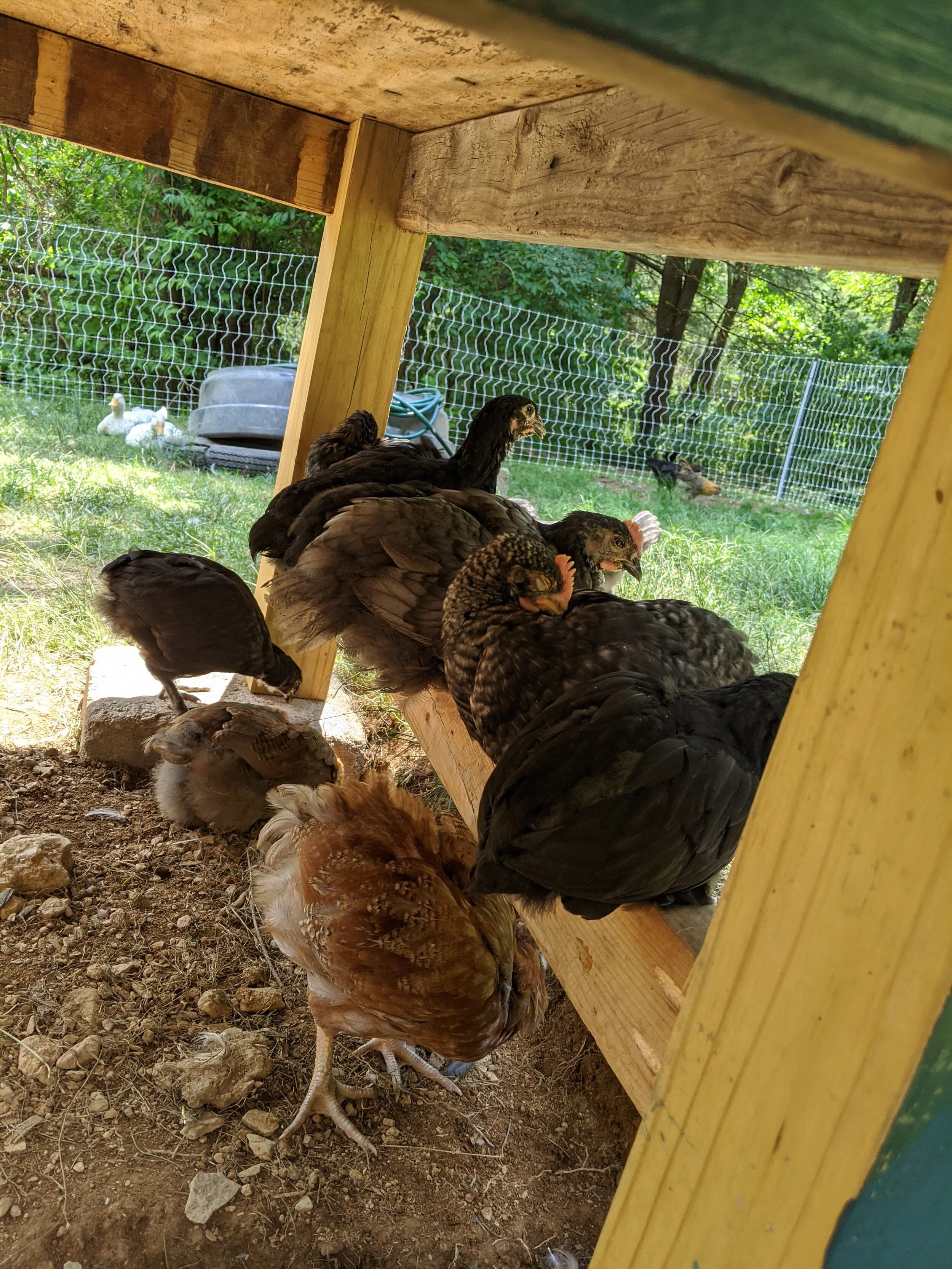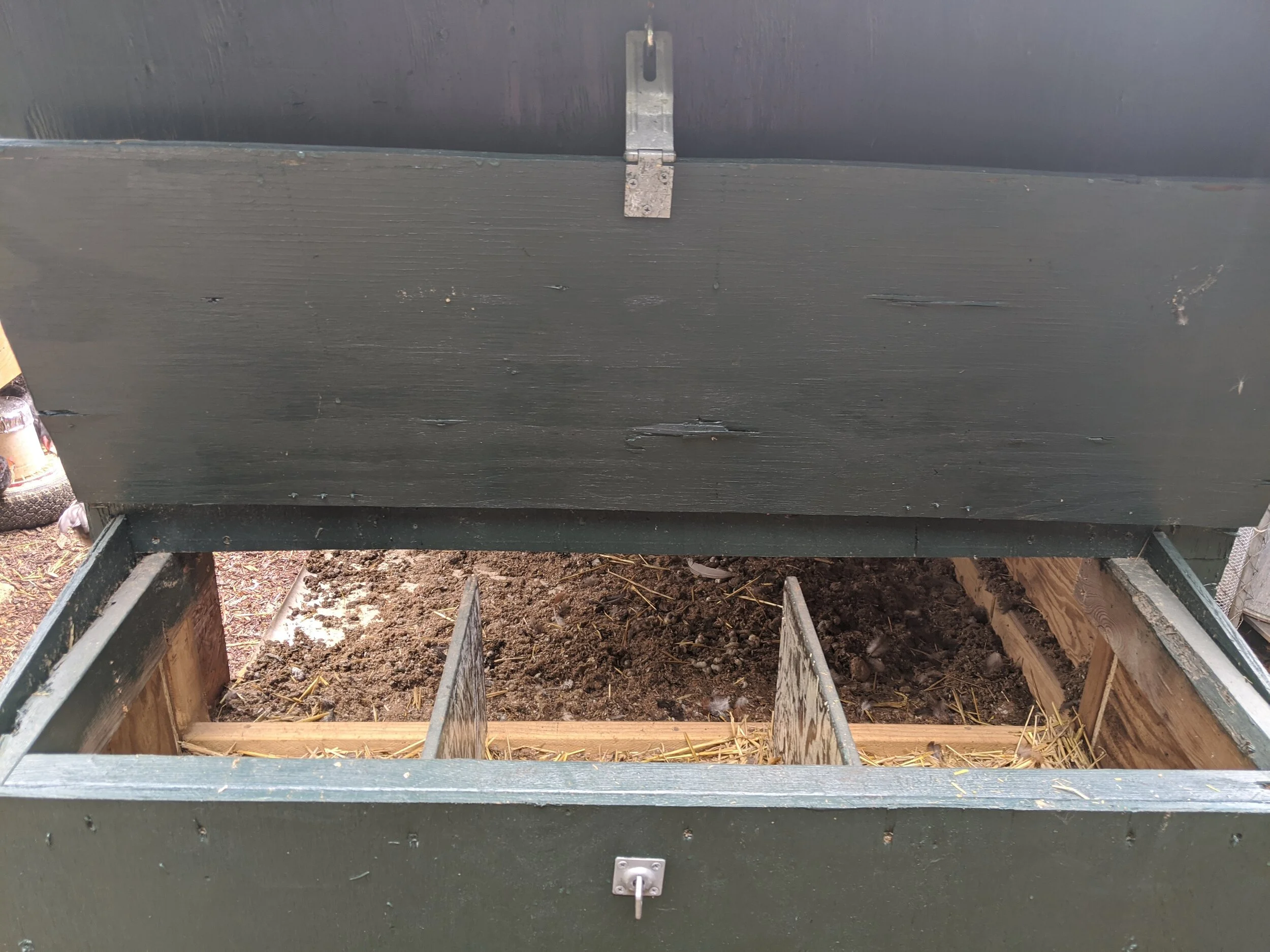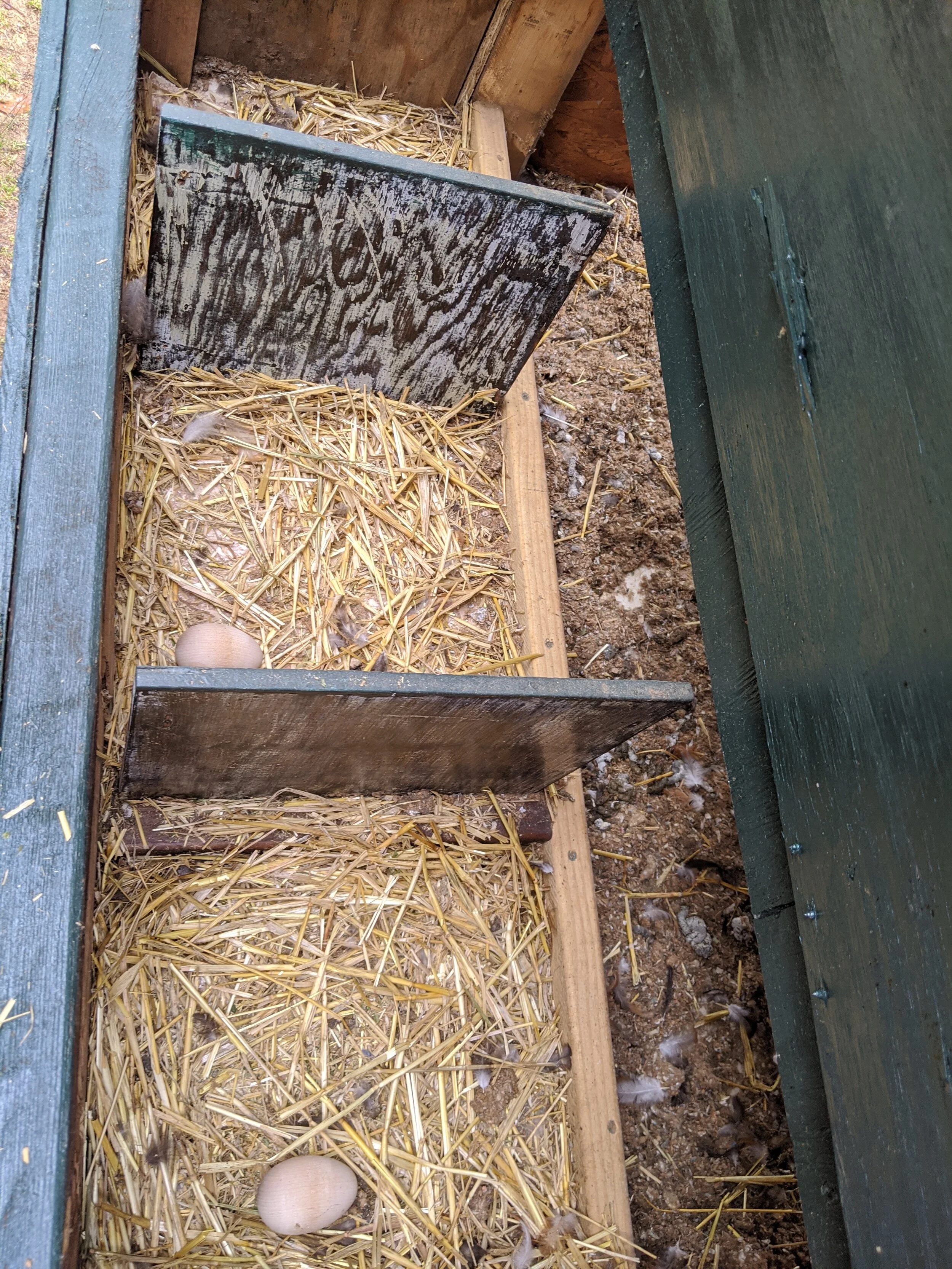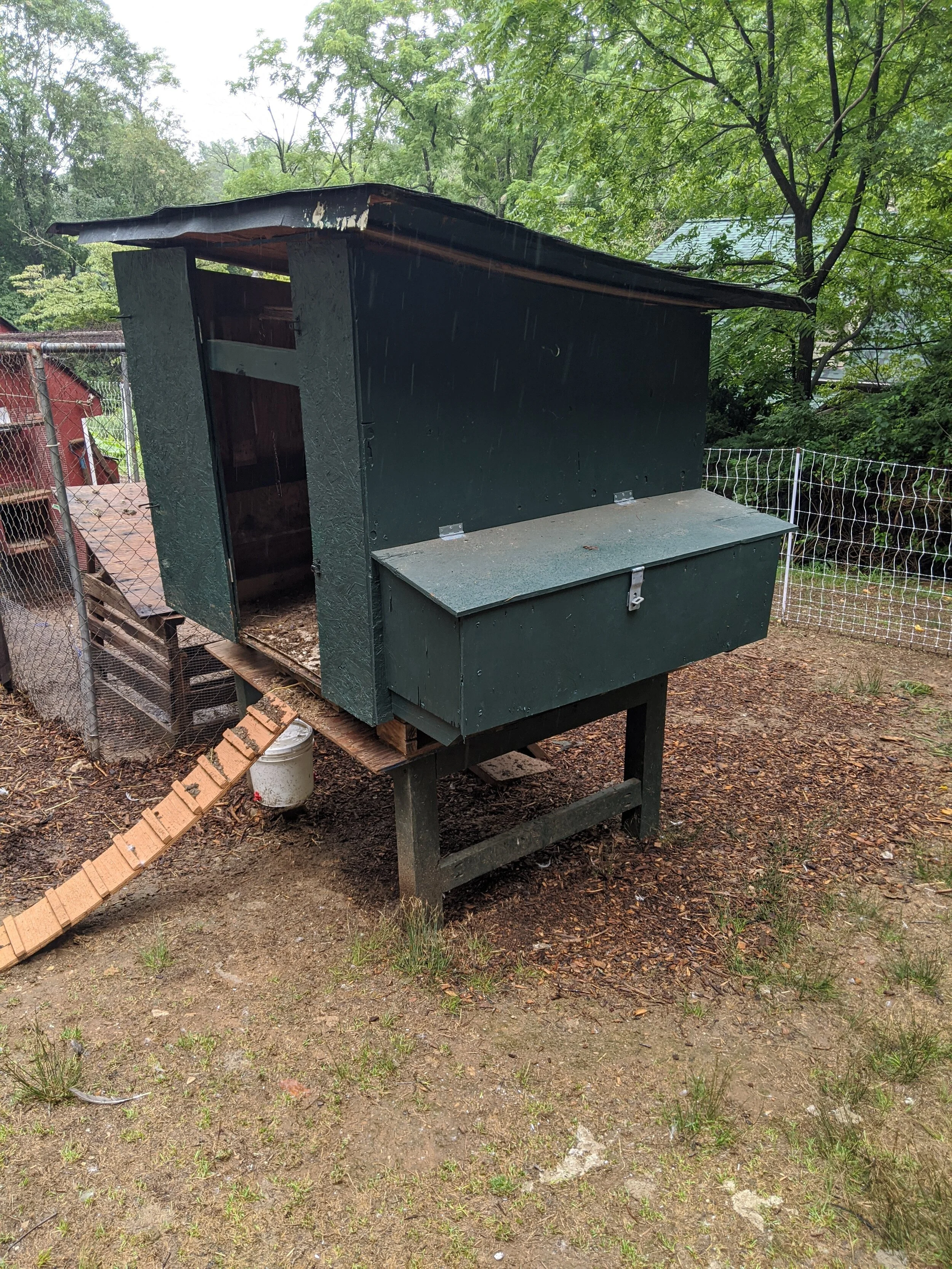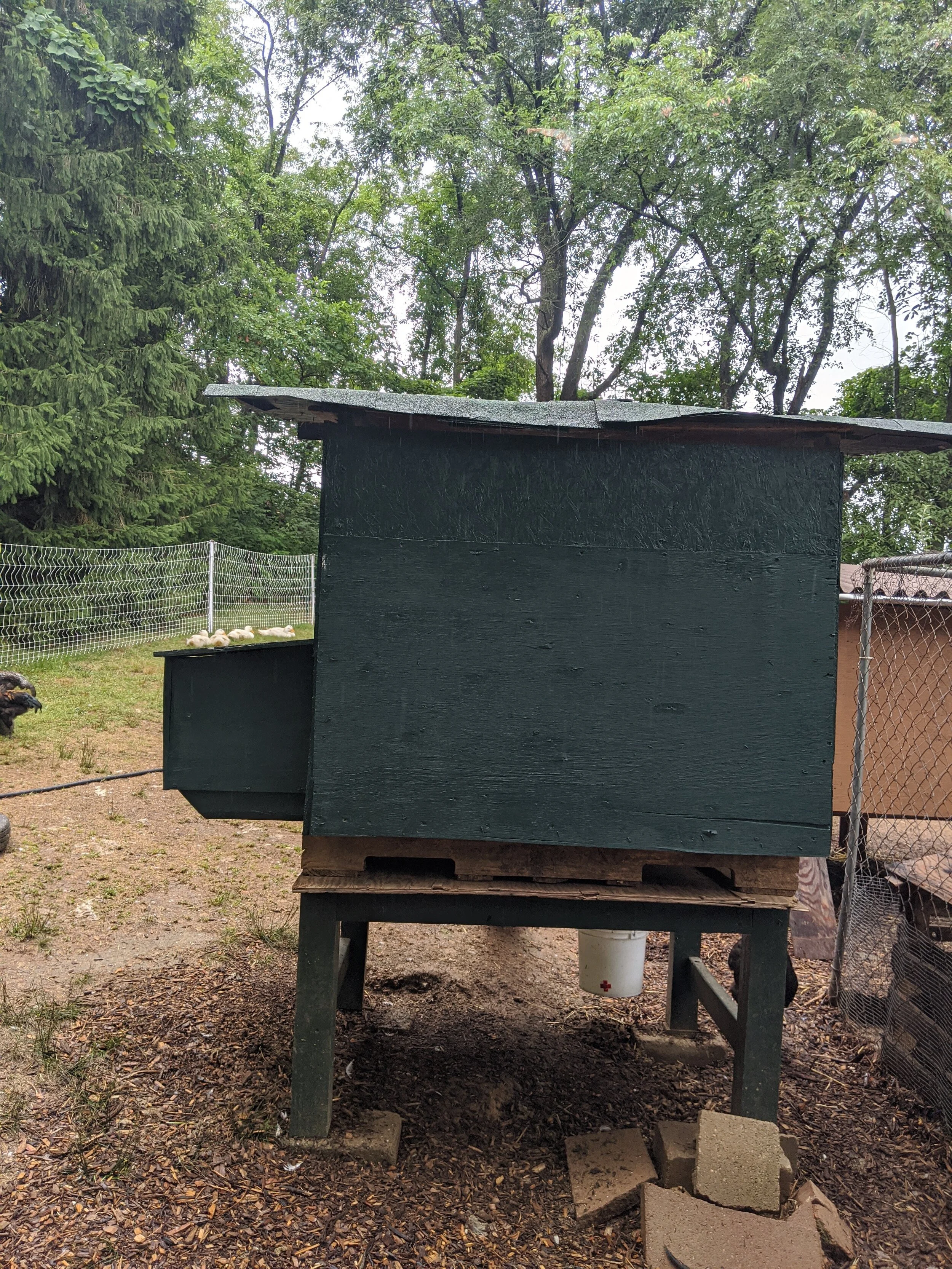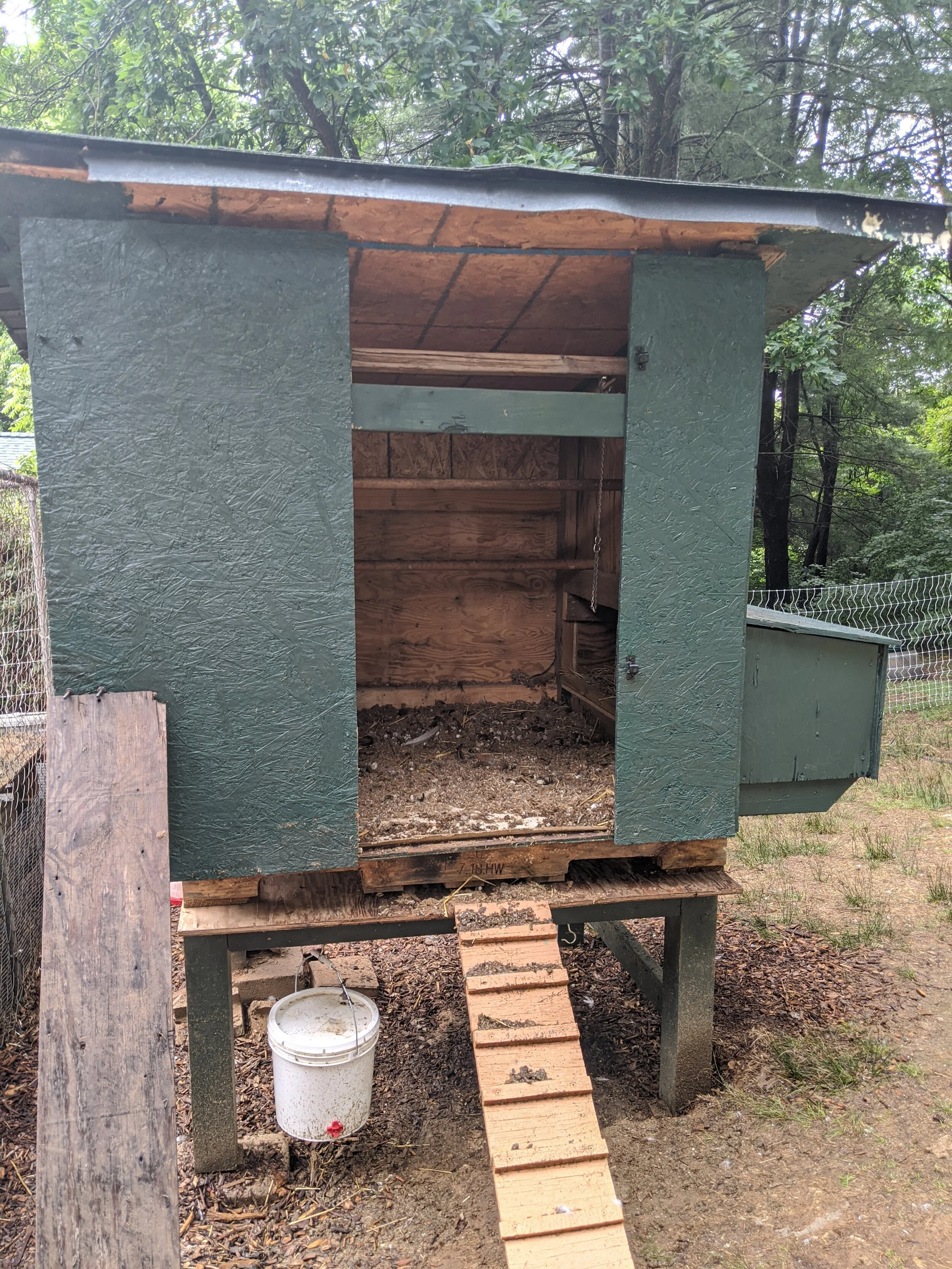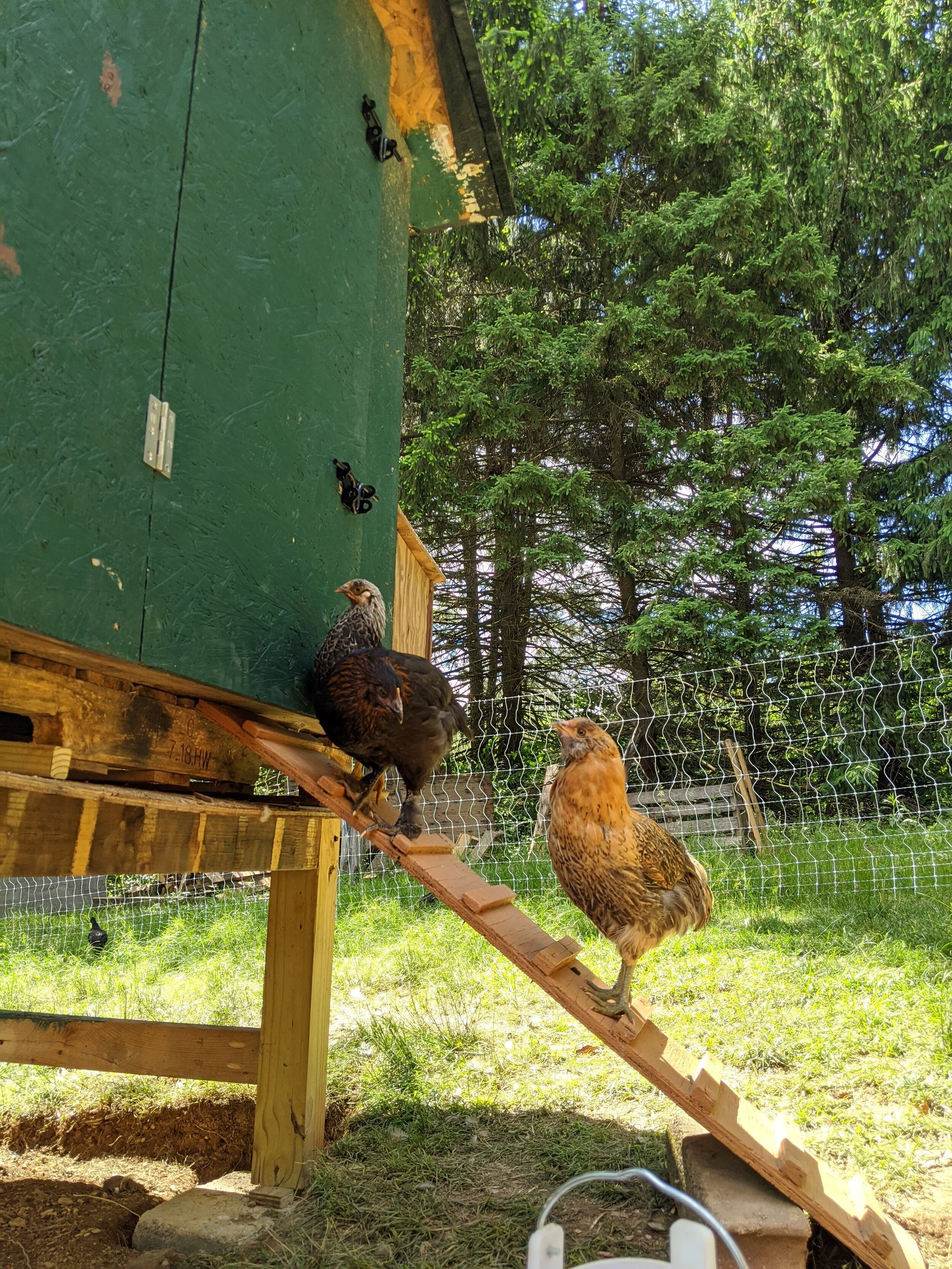Building an Affordable Chick Coop
A while ago, we incubated some chicken eggs. They were gorgeous colors of blues and olive and speckled brown. With the intention of being able to give us a more diverse flock and a colorful basket of hen presents, we were excited to get 10 out of the 12 to hatch. We’ve now got some Olive Egger, Marans, and Ameraucana breeds to add to our community of fowl. Not wanting to upset the order of things, we left the adult hens in their own coop, which we bought on Craigslist from a nice couple down the road, and decided to give these 10 new cheepers their own digs.
Scraps
As we do, most everything is scrap wood, plywood leftover from a roofing job, or pieces from old projects. The only new pieces are a few 2x4’s & some 4x4’s for the base, we don’t want the lil chickies collapsing in the night.
This scrap wood & linoleum is leftover from the previous duck coop when we had to do an upgrade and give them a bigger space, see that “design” build here.
Many of the 2”x4” pieces are scrapped from pallets. Using a hammer and tire iron unhooks the nails pretty well, or using a saw can be helpful too, for well stuck pieces.
The difference in a duck house and a chicken house is roosting space & nest boxes. They still need some ventilation, but not as much as ducks.
Nest Boxes
Nest boxes need to be a comfortable and efficient space, something like 12”x 12”. Here, we used some 2x2 scraps to frame out the next boxes & just some old shelving for the dividers. We use these kind of screws, which are great for most projects - sort of our biggest expense, but they don’t strip out like phillips or flat head screws.
We added a hook above the nest box lid so that it is easy to hold up the lid if you need to clean out the box, or get a broody chicken out, or air it out. Highly recommend that.
Ensure the lid is fitted at an angle for rainwater to roll off. Chickens will not enjoy having drips of rain while laying an egg.
Discourage Bad Critters
Of course there is a latch to keep it locked to discourage raccoons or squirrels or snakes, or whatever critters want to try to eat our eggs or chickens. It is important to use locks or latches that require opposable thumbs. If it is just a hook, a raccoon can easily help itself to the eggs or worse, harm your chickens. It is vital to ensure you always keep things locked and closed when not in use.
Utilize Your Space
Beneath the coop is a nice dry space, there are hooks to hold a waterer and a feeder. Chickens don’t like the rain, so giving them options to stay covered while eating is a win. Just make sure the food doesn’t stay out overnight, or squirrels and chipmunks and other thieves will be happy to clean it out for you.
Measurements
Our chick house is about 4’ square. The front is 4 ft tall, the back is about 3 & 1/2 feet. There are 2 roosts, although the chickens use a 3rd one that we installed to hang a waterer from inside. Generally 9-12 inches of space for each bird is good. Birds like to be next to each other in the winter, but they also need space in the summer. So, generally our birds roost with 7 on one bar, 1 on the next bar & 2 on the top bar. That’s chicken math for you.
The next box spaces are about 12-14 inches wide and 12 inches deep.
Safety
Our chicken yard is surrounded by a Premier One Electric fence, which is a costly but useful investment, if you need a fenced-in area. It allows us to move the fence to give new grassy options, keep the chickens contained during the growing season, and help keep out foxes and dogs.
If you are giving the chickens a permanent run, using hardware cloth in the ground and up the sides of the run provides peace of mind and great protection from outside critters.
Making it a Home
We get outdoor paint from a local re-store, like a habitat for humanity kind of place. Gaps and holes have been caulked, to ensure a dry space with no drafts. We had scrap shingles leftover from our new (human house) roof, to protect the coop for years to come.
You might notice a different type of bedding inside. We’ve been testing out a Pennsylvania made product “PittMoss Prestige Animal Bedding”, it is an up-cycled paper product, kinda like dried newspaper pulp. Seems to be working pretty well so far. My only problem is that it is brown with various colors mixed in, so it is hard to see where there is a poop-buildup sometimes, for spot-cleaning. Otherwise, I like it. Our local feed store carries it.
The only thing left is to secure the door open during the day. Right now it gets a board propped against it, otherwise the wind blows it closed, which makes for angry chickens at bedtime.
Question, Concerns, Comments?
Please let us know what you think, what you’d do differently, any ideas you have, if the comments below!
*In our posts, some links are affiliate links whereby we earn a small percentage of the purchase price, at no cost to you. Most other links are simply the products that we purchased for your information, no affiliation exists. Thank YOU for your support!
